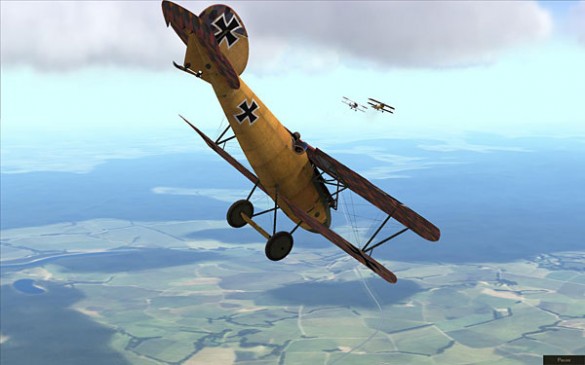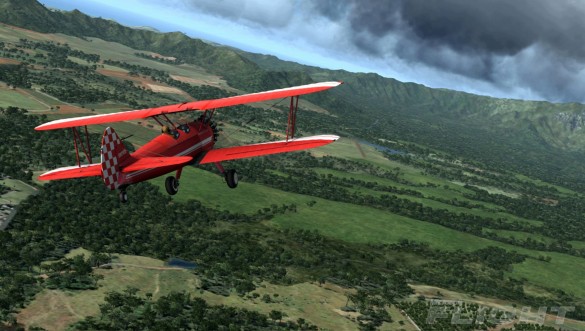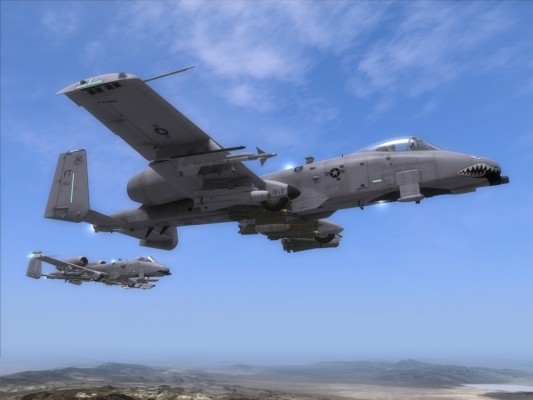My mission is simple: Fly over the enemy’s fortifications and snap some reconnaissance photos. Resistance should be light, and I’m one of a three-man flight group. Fly there, fly back, land in time for breakfast. Easy, right?
As my Spad XIII lifts off from the makeshift runway, Earth’s features slowly blending together beneath me as I gain altitude, I relish in the flight. This is where I was meant to be. Kilometers above firm ground, the wind loud in my ears.
Explosions fill the air as we pass over enemy territory. It looks like their AA gunners have spotted us. I veer left and right, hoping to create a more difficult target. As we pass the enemy’s main encampment I dip my wings slightly, pull out my camera, and snap a few quick photos. My work here is done.
We turn towards home, our mission a success. Off to my left I notice a small speck, and I roll towards it for a closer look. The form of an enemy zeppelin slowly emerges from what was, just a few seconds ago, an amorphous blob of nothingness.
I look over at one of my wingmen and I can tell he’s thinking the same thing – we’ve already accomplished what we set out to do, but why not go for a little extra? I follow him in his dive towards the zeppelin, firing in short bursts as he pulls out of his strafing run.
Success! The zeppelin ignites as I pull out of my dive, and I can’t help but grin as adrenaline pumps hard in my veins. My grin fades as I feel a sharp pain in my chest. Dazed I look down and see blood trickling out of several bullet wounds. Looking behind me I finally see the enemy bandit that managed to sneak up on me while I was preoccupied with the zeppelin. My arms slump and my plane stalls, entering a nosedive that can only end one way.
Spiraling helplessly towards the ground only one thought fills my slowly fading mind: I should have left that stupid zeppelin alone.

So ended the career of Gerard Girard (hey, the computer picked the name, not me), Italian nobleman and World War I fighter pilot. The story above was an actual mission I flew in the career mode of the combat flight simulator Rise of Flight.
Flight simulators attempt to replicate the physics of flying as closely as possible. Things like weather, air flow, the aircraft’s engine performance, and even the buildup of ice on the wings or rotor are continuously monitored and simulated. Flight sims have tremendous learning curves, but the payoff is oh-so-rewarding.
Because of their complexity, flight simulators can be intimidating. Just watch this video for a ‘quick and dirty’ startup for the Ka-50 Black Shark. Sure, you don’t have to manually flip all those switches yourself if you don’t want to (there’s a simple key combination that does it all automatically for you), but there’s no feeling quite like starting it up by yourself for the first time without a checklist. You feel like you’ve actually accomplished something worthwhile. It’s a skill that has no applicability to real life (unless you somehow manage to get kidnapped by Russians, taken to a Russian airfield, and need to make quick escape), but the feeling is there all the same.
Through a series of articles I’ll attempt to ease you into the complexities of flight simulators. First up is a preflight checklist of sorts. I’ll go over everything you need before venturing into the wonderful world of simulated aviation.
Getting started with flight simulators
Your computer
The first thing you’ll want to consider before getting into flight simulators is your computer’s hardware. Most recently released flight simulators require a reasonably powerful computer unless you want to play them on the lowest graphical settings. I’d recommend at least a dual core processor (Core 2 Duo for example), 2GB of RAM (more is better), and an Nvidia 8800 GT/ATI 4850. You can probably squeak by with less if necessary, but by doing so you’ll have to seriously sacrifice graphical quality.
If your computer isn’t up to snuff, don’t worry! Along with the latest and greatest flight simulators I’ll also be recommending some older sims that run fine on almost any hardware.

Input devices
Next up you’ll want to get your hands on a decent joystick. Most flight simulators are technically playable with just a keyboard and mouse, but at that point why even bother? If you don’t mind spending a bit of extra money, go ahead and get Saitek’s X52 HOTAS (hands on throttle and stick). It’s generally considered to be the de facto mid-range joystick. If money isn’t an issue at all you can go crazy and get yourself something like Thrustmaster’s A-10C Warthog replica HOTAS.
There are plenty of lower end joysticks that work just fine if you’re on a budget. If you decide to pick up one of these, you’ll want to make sure it has a few things:
- A twist axis. If you opt not to get rudder pedals (more on those later), a joystick’s twist axis is generally used for the pedals’ functions.
- A throttle lever. Throttle control can be relegated to the keyboard if necessary, but the importance of the fine control provided by even a simple throttle lever cannot be understated.
- A hat switch. Some people like to use the numeric pad on the keyboard to look around in-game while others prefer the hat switch on a joystick. If you aren’t yet sure which camp you fall into, you might as well get a joystick with a hat switch just in case.
Extra peripherals
Lastly we come to any additional peripherals you might want to pick up to enhance your experience. None of them are by any means necessary, but if you have the cash to spend they can certainly make your simming life easier. Rudder pedals are much less awkward to use than the twist axis on a joystick. TrackIR, while expensive, completely changes the way you play sims by using head tracking software to map your real life head movements to in-game head movements. Saitek also makes a wide range of additional peripherals for you to play with.

What’s next?
Once you start playing around in simulators you will invariably have questions. Sims are complex beasts by nature, and some things would be near impossible to figure out on your own. Thankfully the simming community is welcoming to newbies and generally happy to answer your questions. Most games have forums set up by their publishers, or you could check out FlightSim.com or SimHQ. Both websites publish excellent simulator-related articles, and both have forums set up for game discussion.
That covers all the basics you’ll need to start flying (in the virtual world, at least)! Keep an eye out for part 2 of my Introduction to Flight Simulators series, in which I’ll be discussing various non-combat flight simulators that are available.


Leave a Reply
You must be logged in to post a comment.